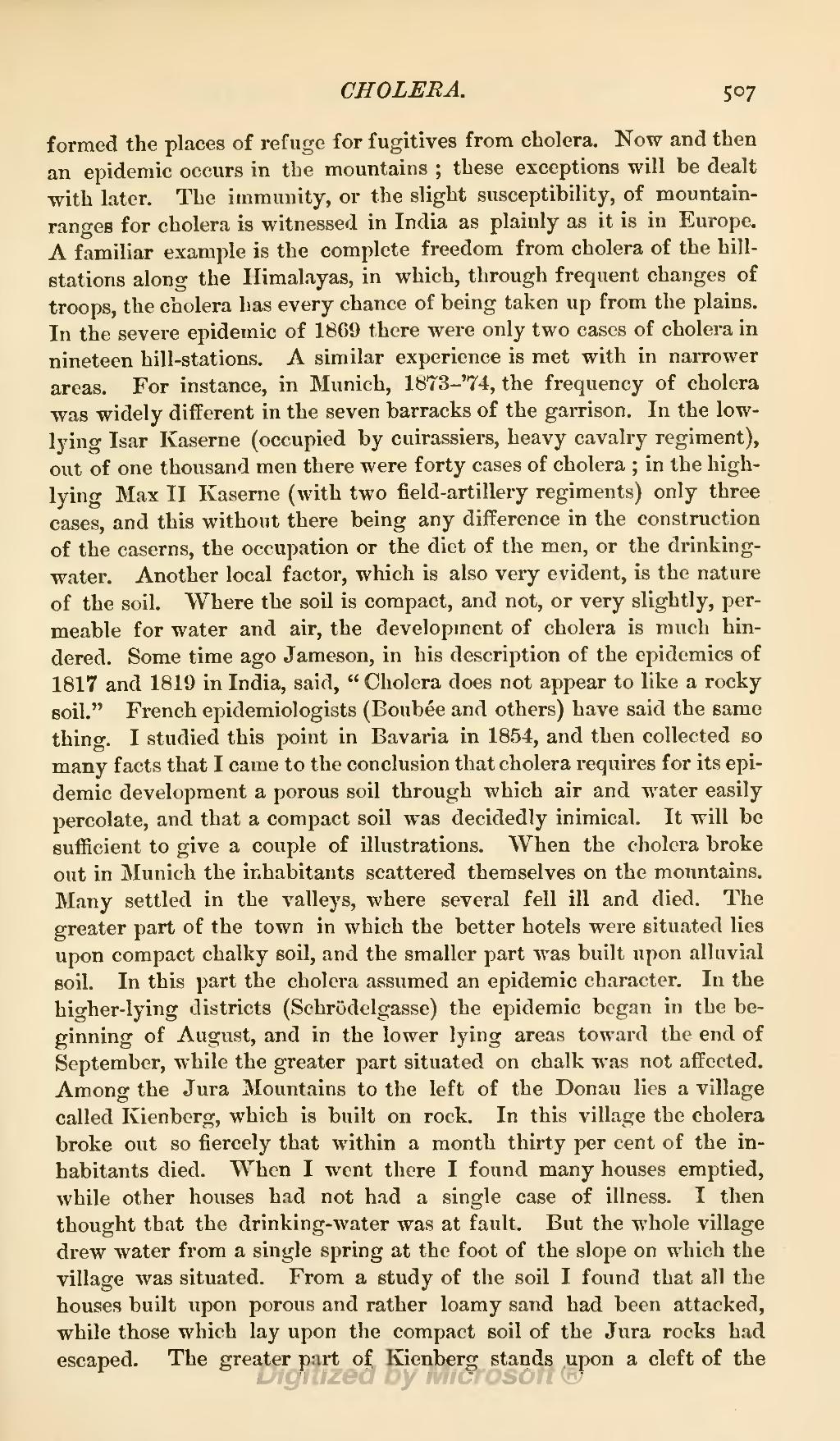formed the places of refuge for fugitives from cholera. Now and then an epidemic occurs in the mountains; these exceptions will be dealt with later. The immunity, or the slight susceptibility, of mountain ranges for cholera is witnessed in India as plainly as it is in Europe. A familiar example is the complete freedom from cholera of the hill stations along the Himalayas, in which, through frequent changes of troops, the cholera has every chance of being taken up from the plains. In the severe epidemic of 1869 there were only two cases of cholera in nineteen hill-stations. A similar experience is met with in narrower areas. For instance, in Munich, 1873-'74, the frequency of cholera was widely different in the seven barracks of the garrison. In the low lying Isar Kaserne (occupied by cuirassiers, heavy cavalry regiment), out of one thousand men there were forty cases of cholera; in the highflying Max II Kaserne (with two field-artillery regiments) only three cases, and this without there being any difference in the construction of the caserns, the occupation or the diet of the men, or the drinking water. Another local factor, which is also very evident, is the nature of the soil. Where the soil is compact, and not, or very slightly, permeable for water and air, the development of cholera is much hindered. Some time ago Jameson, in his description of the epidemics of 1817 and 1819 in India, said, "Cholera does not appear to like a rocky soil." French epidemiologists (Boubée and others) have said the same thing. I studied this point in Bavaria in 1854, and then collected so many facts that I came to the conclusion that cholera requires for its epidemic development a porous soil through which air and water easily percolate, and that a compact soil was decidedly inimical. It will be sufficient to give a couple of illustrations. When the cholera broke out in Munich the inhabitants scattered themselves on the mountains. Many settled in the valleys, where several fell ill and died. The greater part of the town in which the better hotels were situated lies upon compact chalky soil, and the smaller part was built upon alluvial soil. In this part the cholera assumed an epidemic character. In the higher-lying districts (Schrödelgasse) the epidemic began in the beginning of August, and in the lower lying areas toward the end of September, while the greater part situated on chalk was not affected. Among the Jura Mountains to the left of the Donau lies a village called Kienberg, which is built on rock. In this village the cholera broke out so fiercely that within a month thirty per cent of the inhabitants died. When I went there I found many houses emptied, while other houses had not had a single case of illness. I then thought that the drinking-water was at fault. But the whole village drew water from a single spring at the foot of the slope on which the village was situated. From a study of the soil I found that all the houses built upon porous and rather loamy sand had been attacked, while those which lay upon the compact soil of the Jura rocks had escaped. The greater part of Kienberg stands upon a cleft of the
Page:Popular Science Monthly Volume 26.djvu/523
Appearance

